7.3 ICO vs IDO vs IEO: Which One is the One?
Stop overpaying - start transferring money with Ogvio. Sign up, invite friends & grab Rewards now! 🎁
In this section, we’re going to take a look at the concepts of ICO vs IDO vs IEO!
For a beginner, they all mean the same thing - confusion. What do these abbreviations even stand for? In my the previous sections, I’ve covered various DeFi elements, such as blockchains, dApps, and cryptocurrency exchanges. Today, I shall concentrate on how many of these companies and projects got their start. In many cases, it was thanks to an ICO, IEO, or IDO!
As you’ll see, these processes provide different benefits, just as they all have their own, unique drawbacks. They’re a cause for debate, since there’s no right answer about which one is the best way of conducting the initial stages of raising capital and starting a DeFi project.
In this section, we’re going to define and discuss ICO vs IDO vs IEO. Specifically, we’ll talk about what every one of these terms mean, what’s their purpose, when and why were they created, and what’s their role in the overall bigger picture of the DeFi world.
Let’s jump straight to it!

Video Explainer
Video Explainer: ICO vs IDO vs IEO: Which One is the One?
Reading is not your thing? Watch the "ICO vs IDO vs IEO: Which One is the One?" video explainer
ICO vs IDO vs IEO: Which One's the Best? (Easily Explained)


What is ICO?
Let’s begin by answering, “what is ICO?”. Well, for starters, ICO abbreviates as an “Initial Coin Offering”.
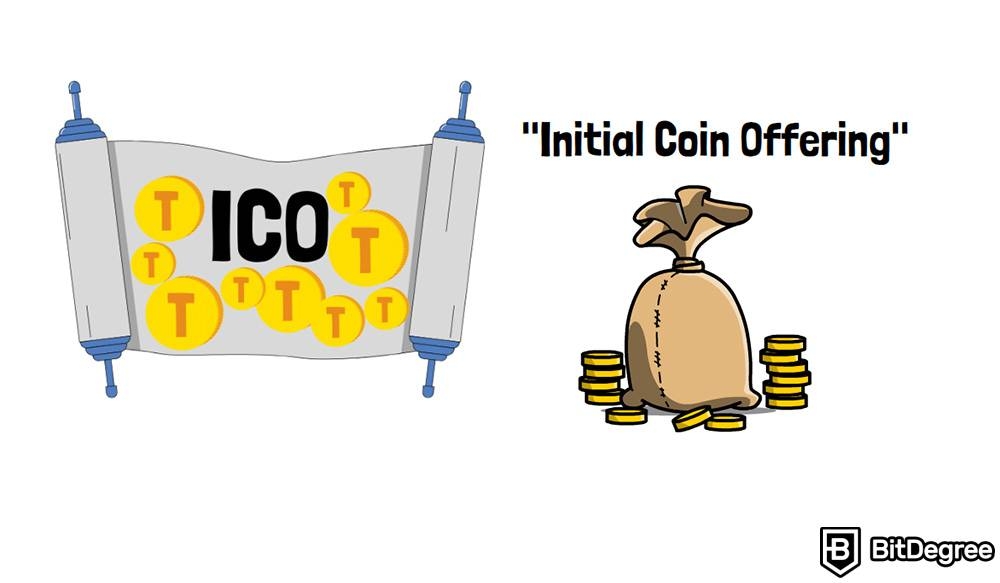
In order to understand its role, consider this example - it will give you more than a dry theoretical definition of this term:
It’s 2014. And this is Mark. He’s only 19 years old, but he’s a brilliant, promising guy who has revolutionary ideas brewing up in his mind. He’s been eyeing the crypto world closely, he sees the potential that Bitcoin has, and how important the blockchain impact on the world might be.
Mark understands that Bitcoin offers a radical new approach towards money, and how the international monetary system should look like. It’s a game-changing innovation that introduces decentralized payments, and aims to give people back their power over their money and information.
Mark is a smart fellow. He realizes that Bitcoin’s core decentralized architecture, the blockchain technology, could become a very powerful tool that could be put to use to make the whole world a better place. From financial apps, to gaming, or data storing - it could be used to transform the world as we know it.
Okay, so Mark comes up with an idea. Now, in order to make it happen, he needs a strong team, and… money. Lots of money. Where does he get it from? Fundraising. But, it’s crypto we’re talking about here. So, Mark goes and organizes an ICO, an Initial Coin Offering, with hopes that it will attract investors. Everything goes according to plan, and Mark ends up with a newly-raised $18 million.
In case this sounds very familiar… This story did indeed happen, and everything here is true. Except for the fact that Mark’s real name isn’t Mark. It’s Vitalik Buterin, who came up with the idea to expand the practical applications of blockchain tech back in 2014, and, thanks to a well-orchestrated ICO, ended up creating Ethereum.
So, ICOs in crypto are a way of fundraising capital for promising crypto startups. But how do they look in real life?

Organizing an ICO usually consists of the following stages. First of all, a company prepares a whitepaper. It’s an official document that states their vision, their mission, the technical part of their project, and the reasoning why it’s going to be something that’s better not to miss out on.
Once the whitepaper is complete, the team begins looking for potential investors. They send them their whitepaper, pitch their idea, and try to convince them to support the project.
Then, after they find eager investors, the actual ‘coin offering’ part takes place. The startup issues their own tokens, and sells them to their investors.
What makes the ICO crypto concept attractive is the fact that, in case the company was to truly achieve their goal, their own native token would increase in value, thus allowing investors to profit from the coins they obtained during the ICO.
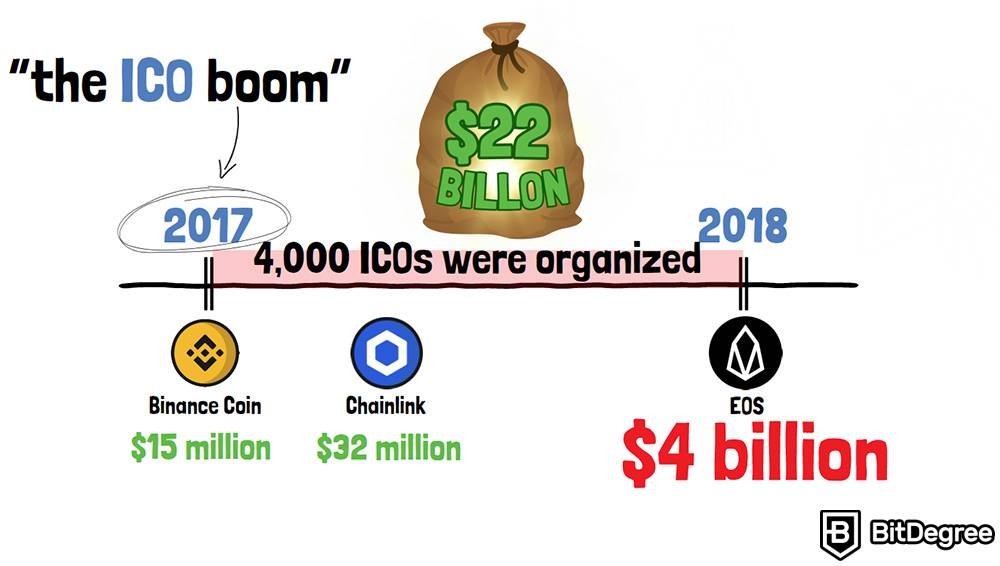
Here are some other notable ICOs that contributed to the popularity of this way of fundraising. In 2017, the Binance Coin raised $15 million. The same year, Chainlink, a decentralized oracle network, raised $32 million through an ICO.
As you can see, the numbers here are far from pocket money. But nothing comes close to the ICO held by EOS, the blockchain protocol, which raised over $4 billion in 2018.
Obviously, such success stories inspired others. 2017 became known as the year of "the ICO boom". During this year, more than 4,000 ICOs were organized, and over $22 billion was raised! People sensed that this is the new goldmine, and everyone flocked in to cash out on this new trend.
Unfortunately, it’s not only honest, hard-working people who grabbed this opportunity. Many scammers made history by organizing well-covered thefts in the shape of ICOs.
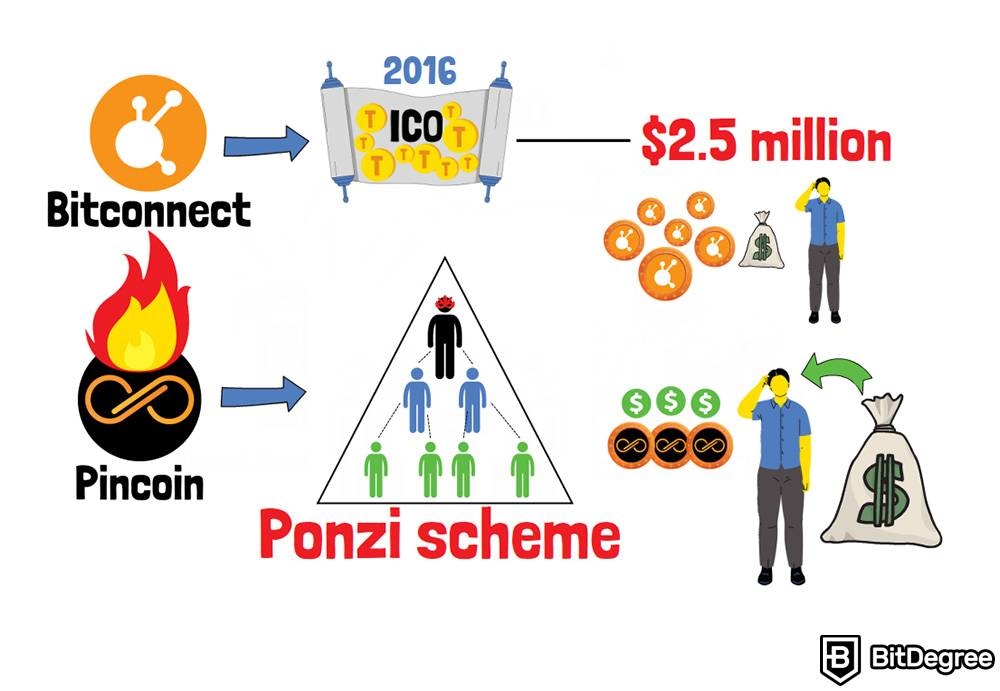
The infamous Bitconnect launched their ICO back in 2016, and raised $2.5 million by selling their BCC token to gullible investors. Pincoin is yet another example of bad people ruining the reputation of good things.
The team behind Pincoin promised investors high returns on their investment in exchange for buying tokens. However, most people would tell you that it was nothing but a well-decorated Ponzi scheme. The project collapsed, and the founders fled the country with all the investors’ funds in their pockets.
It became clear. ICOs are a rather dangerous way of trusting one’s money to a crypto startup. Something new had to be offered. And it was. A new way of fundraising was created.
What’s an IEO?
Suddenly, IEOs became a thing. The abbreviation stands for “Initial Exchange Offering”, and, as you can probably tell from the name, it refers to exchanges being involved with it. And for a reason. A platform was needed to organize the fundraising procedure, and make it more difficult for scammers and malicious people to organize their fraudulent projects.

Just like ICOs vs IDOs, IEOs are also a way of fundraising. The ‘Exchange’ here refers to a cryptocurrency exchange. It plays the role of an intermediary between the two participating sides. The people behind the project (the ones who need the money), and the investors (the ones who have the money).
It was the first quarter of 2019, when IEOs started gaining popularity.
In its essence, IEOs are very similar to ICOs, except for the fact that there’s a platform, provided by an unbiased third party, which employs security measures, thus making the whole deal more trustworthy and transparent. By extent, it became more appealing to investors, who, at that time, had become a lot more cautious about investing in crypto projects.
Here, let’s take a look at some notable examples of successful IEOs.
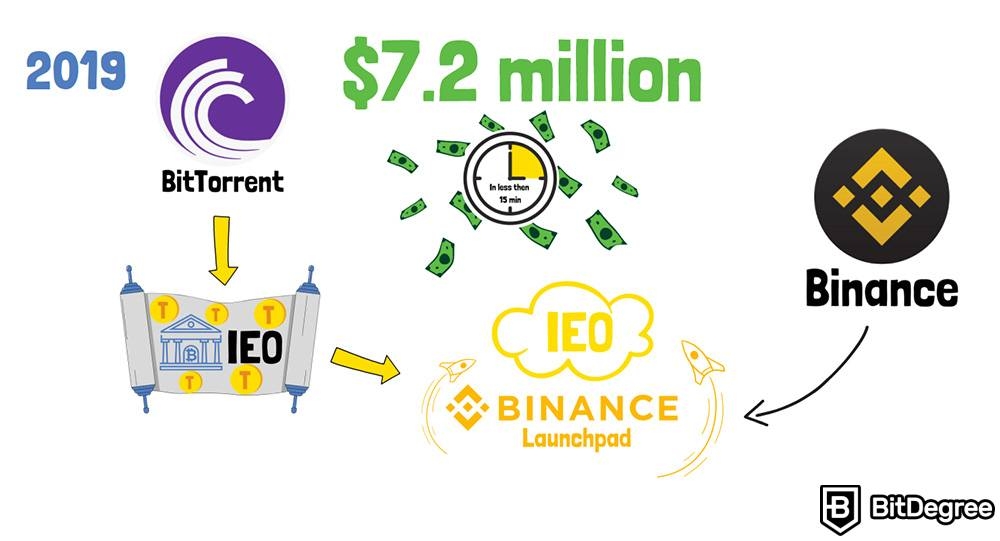
In 2019, BitTorrent raised $7.2 million in less than 15 minutes. The IEO was organized and took place on the Binance Launchpad. This is a platform provided by Binance, the crypto exchange, created solely for IEOs.
Another example could be Huobi Prime's IEO for the TOP Network. It resulted in $8.3 million raised in 19 seconds! As you can tell from the event’s name, the IEO was held on the crypto exchange Huobi.
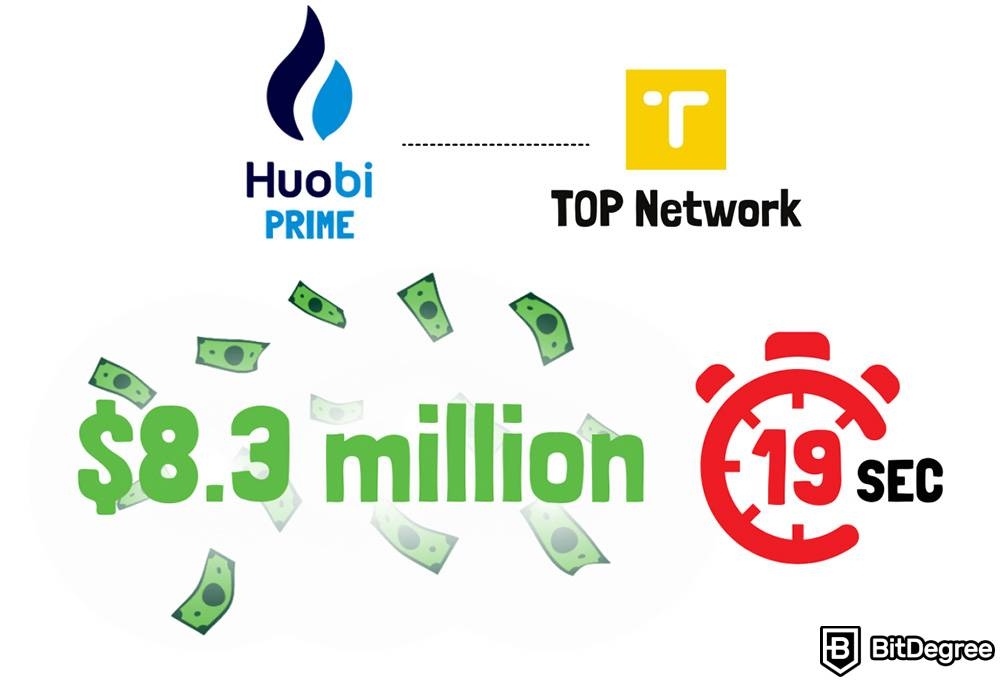
But a new problem arose. In certain cases, not everyone was able to participate in the token acquisition. Exchanges began limiting who could participate in IEOs by, for example, introducing various requirements. They could have ranged from asking users to have an account on the exchange, hold the exchange’s native tokens, or meet trading volume requirements. The same applied to projects which may have wanted to organize their IEO on a particular exchange.
Once again, the world of fundraising models needed something new.
What is IDO?
So, that’s where IDOs in crypto became a thing. An “IDO” is an “Initial DEX Offering,” where “DEX” stands for “Decentralized Exchange”. If you feel like refreshing your knowledge on what DEXs are, and how they are different from centralized exchanges, be sure to check a section dedicated to this topic!

Now, the debate of ICO vs IDO in crypto, just like the one of IDO vs IEO, goes on. After all, they’re all just different fundraising mechanisms for crypto startups. But, this time, the action takes place not on a centralized exchange, but… you guessed it, a decentralized one.
The competition of ICO vs IDO vs IEO is a real thing because they are all ways of allowing startups to raise capital by selling tokens to investors. With IDOs, the whole process takes place on a DEX, thus solving the problems that arise with ICOs and IEOs - namely, a lack of transparency, safety, or participation requirements.
IDOs really decentralize the whole fundraising process. A crypto wallet and an internet connection were the main conditions to contribute to the fundraiser campaign.
Suddenly, projects were able to market their products to the whole community, instead of selected accredited investors. You can look at this as a ‘GoFundMe’ version of DeFi, since, at its very essence, IDOs work in a very similar way.
Apart from that, IDOs allow projects to experiment and see for themselves what the market demand for their newly-issued token is. These tokens aren’t listed on centralized exchanges at the time of the IDO, so truly enthusiastic investors can begin trading them on DEXs before they get listed on a centralized platform.

Here are some real-life examples. In August 2020, Ocean Protocol, a data exchange protocol, raised $1.8 million on Balancer. Or, in October 2020, Polkastarter, a decentralized protocol, raised $775k on Uniswap.
Wrapping Up
So, there you have it; we have covered the ongoing ICO vs IDO vs IEO debate, the three most popular DeFi fundraising models. None of them are perfect, yet it’s thanks to these fundraising processes that we have what we have in the crypto space. Every established household name had its beginnings. And, no matter what DeFi company, dApp, or product you’d look into, it’s almost certain that it began with either an ICO, IEO, or an IDO.










